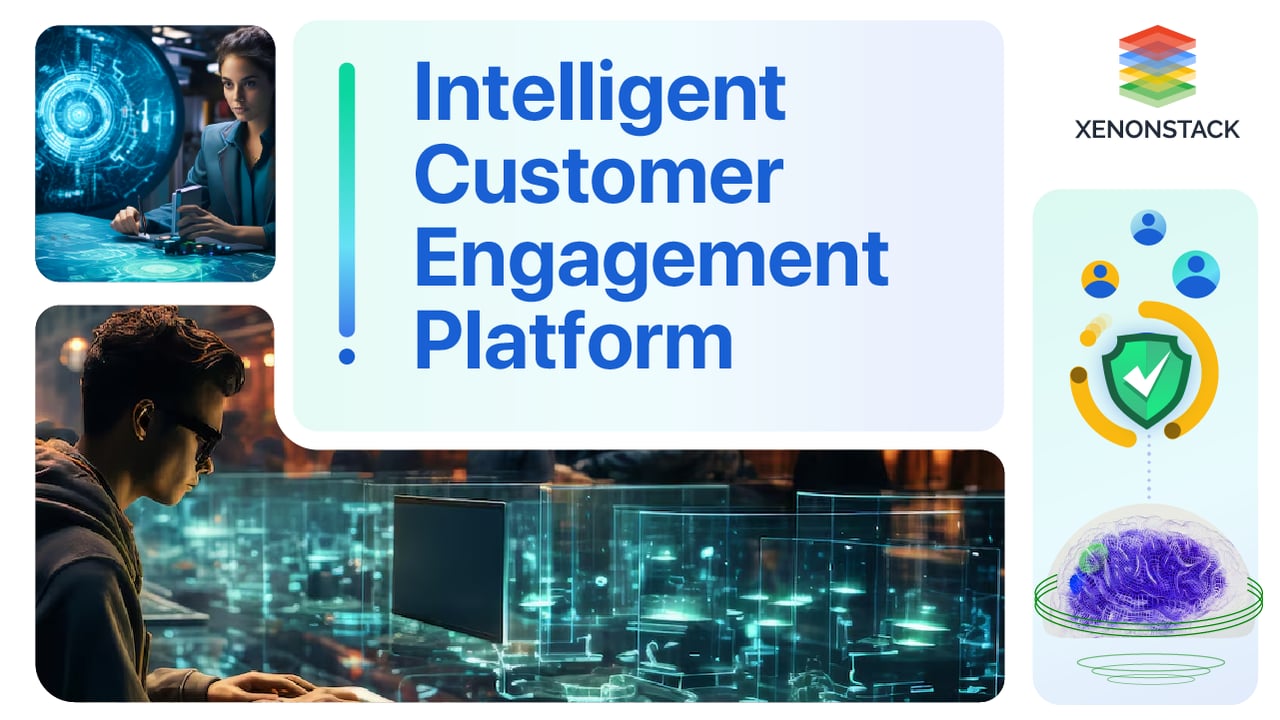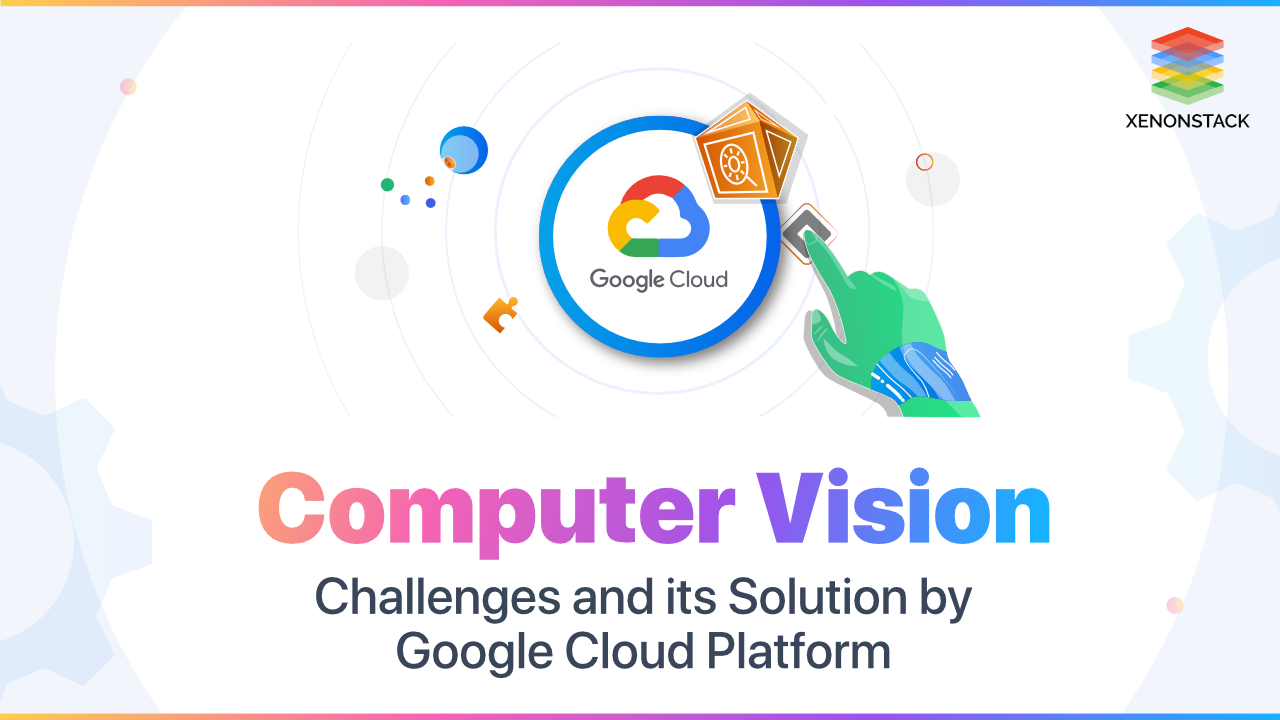
Introduction
XenonStack undertook a comprehensive project aimed at developing an Intelligent Customer Engagement Platform. This case study delves into the technical details, challenges faced, and solutions implemented throughout the journey of building this platform on the AWS Cloud.
Project Overview
The project, initiated in February 2024 and currently ongoing, was conceptualized to streamline customer communication and drive engagement through AI-powered analytics and omnichannel orchestration. The goal was to build a scalable, intelligent platform capable of managing complex business processes with efficiency and agility.
A key component of the solution is an omnichannel data and AI platform that transforms WhatsApp into a powerful enterprise channel—enabling its use across sales, marketing, CRM, compliance, and analytics functions. This platform captures, normalizes, and enriches WhatsApp conversations without disrupting how teams or customers use the app. It introduces AI-driven capabilities like intelligent agents, generative AI workflows, and behavioral insights to deliver personalized, real-time experiences.
The backend is powered by a suite of AWS services, ensuring robustness, scalability, and secure data processing. Together, these capabilities support a reimagined go-to-market strategy—leveraging data and AI to simplify customer journeys, boost revenue generation, and maintain regulatory compliance across digital touchpoints.
Customer Challenge
The customer faced multiple challenges in delivering a cohesive customer engagement strategy:
-
Difficulty in tracking & optimising customer journeys , due to lack of engagement behaviour analytics.
-
No real-time observability or compliance enforcement across the customer-facing systems.
-
Scalability bottlenecks during traffic surges, impacting performance and reliability.
-
Manual auditing processes failed to keep pace with data governance and industry-specific compliance standards (such as GDPR etc.).
The customer required a robust, unified solution to centralize communication, automate processes, and provide real-time analytics while ensuring full regulatory compliance.
Proposed Solution
We proposed the development of an Intelligent Customer Engagement Platform leveraging AWS Cloud services. The architecture included front-end applications, AWS Lambda Functions, Amazon DynamoDB, Amazon Simple Queue Service (Amazon SQS), Elasticsearch, and more, facilitating real-time interactions, data processing, and analytics.
The project was conceptualized to streamline customer communication and enhance engagement through AI-driven analytics and omnichannel orchestration. It involved the integration of various AWS services to create a robust platform capable of handling complex business processes efficiently.
We proposed the Halo Omnichannel Cloud, the AI SaaS platform designed for WhatsApp compliance, observability, and data risk management. This solution aimed to prepare companies for Generation AI by facilitating omnichannel experiences across their entire distribution network.
Key Features: The solution offered autonomous intelligent agents capable of bridging the gap between physical and digital consumer experiences, resulting in efficient omnichannel interactions.
-
Auto-Scaling: Utilization of AWS Auto Scaling features to dynamically adjust resources based on demand, ensuring optimal performance and cost-efficiency.
-
API Rate Limiting: Implementing rate limiting to prevent API abuse and ensure smooth operation.
-
Encryption: Employing encryption techniques to protect sensitive data at rest and in transit.
-
Role-Based Access Control (RBAC): Implementing RBAC to enforce fine-grained permissions for user roles.
-
Continuous Monitoring: Setting up monitoring and alerting systems (using Amazon CloudWatch) for proactive issue detection and resolution.
-
Performance Optimization: Fine-tuning application performance for optimal resource utilization and user experience.
Architecture Design
The architecture comprised multiple components, including front-end applications, AWS Lambda functions, Amazon DynamoDB, Amazon Simple Queue Service (Amazon SQS) FIFO Queues, Elasticsearch, and more, each playing a crucial role in enabling real-time interactions, data processing, and analytics.


AWS Services Used
-
Amazon Elastic Container Service (Amazon ECS): Development and deployment of web-based interfaces for user interaction on Amazon ECS.
-
AWS Lambda Functions: Implementation of serverless functions for handling backend processes.
-
Amazon DynamoDB: Creation of tables for storing customer data and campaign information.
-
Amazon Simple Queue Service (Amazon SQS): Ensuring message sequencing and reliability in real-time interactions.
-
Elasticsearch: Setup of ELK stack for technical and business insights analytics.
-
Amazon API Gateway: Management of backend requests and integration with Lambda functions.
-
AWS CloudFormation: For infrastructure as code (IaC) to manage and provision cloud resources.
-
AWS Amplify: Acceleration of API development and integration using GraphQL.
-
AWS AppSync: enabled us to create scalable, secure GraphQL APIs for real-time data sync and efficient querying, enhancing data flexibility and performance with strict governance and security.
-
AWS CloudTrail: For governance, compliance, and operational auditing of the AWS account.
-
AWS Identity and Access Management (IAM): For defining roles and managing permissions securely.
-
Amazon CloudWatch: For monitoring and observability of AWS resources and applications.
-
AWS Kinesis Streams, Firehose and S3 : Ingestion Layer for ingestion of transactional data from DynamoDB to S3 Bronze Layer using Kinesis Streams & Firehose.
-
AWS Glue, Iceberg, Athena and Quick Sight: Scheduled AWS Glue Job is used to transform the data in Bronze Layer to be consumed by Analytics Dashboards in Quick Sight via Athena.
Partner’s Support Services During Pre- and Post-Migration/Implementation
XenonStack offered extensive support through each phase of the customer’s digital transformation:
Pre-Implementation:
-
Conducted architecture assessments and communication workflow audits from previous vendor.
-
Designed a scalable and high performant cloud-native architecture blueprint tailored to the client’s industry.
-
Provided detailed enhancements roadmaps for new features and cost-optimization strategies.
Post-Implementation:
-
Offered 24/7 support for the platform, including new customer onboarding , incident response, performance optimization, and patch management.
-
Regularly offered Platform updates aligned with evolving standards (e.g., WhatsApp Business APIs).
-
Delivered custom dashboards and KPIs for continuous performance and engagement tracking for different enterprises.
AWS Services Utilized for Governance
To achieve these objectives, we leveraged the following AWS services:
AWS CloudFormation
-
Infrastructure as Code (IaC): We used AWS CloudFormation to define and provision the entire infrastructure as code, ensuring consistent and repeatable deployments. This included setting up VPCs, subnets, security groups, and IAM roles with predefined policies.
AWS Identity and Access Management (IAM)
-
Role-Based Access Control (RBAC): Implemented RBAC to manage permissions and enforce the principle of least privilege. Defined IAM roles and policies to restrict access based on job functions.
-
Multi-Factor Authentication (MFA): Enabled MFA for all IAM users to enhance security.
AWS Organizations
-
Implemented AWS Organizations to manage Customer's AWS accounts centrally. This included creating separate accounts for development, staging, and production environments to enforce isolation and ensure proper resource management across different stages of the application lifecycle.
AWS CloudTrail
-
Operational Auditing: Enabled CloudTrail to log all API calls made within the AWS account. This provided a comprehensive audit trail for all actions performed, helping in forensic analysis and compliance reporting.
AWS Systems Manager
-
Automation and Patch Management: Used Systems Manager to automate routine operational tasks such as patching, updates, and configuration changes. This ensured consistency and reduced the risk of human error.
-
Parameter Store: Managed application configuration data and secrets securely using Parameter Store, enabling secure and consistent access across environments.
Amazon CloudWatch
-
Monitoring and Alarming: Set up Amazon CloudWatch to monitor key metrics and log data from AWS services and applications. Configured alarms to notify the operations team of any anomalies or issues that required immediate attention.
-
Dashboards: Created custom dashboards to visualize the health and performance of the infrastructure and applications.
Policy Enforcement
To enforce governance policies effectively, we implemented the following strategies:
-
Tagging Strategy: Established a comprehensive tagging strategy for all resources to enable better cost management, operational visibility, and automation.
-
Service Control Policies (SCPs): Used AWS Organizations to apply SCPs across accounts, ensuring that only compliant resources and configurations could be created.
-
Lifecycle Policies: Implemented lifecycle policies for data storage to manage costs and ensure data retention compliance.
Third Party Applications or Solutions
-
Integration with WhatsApp Business Platform: For omnichannel orchestration and compliance.
-
Clerk: Simplification of user management processes through embedded features.
-
Google Analytics Integration: Tracking and analysis of campaign data for performance insights.
Key Services
-
Workspaces: Creation of autonomous intelligent agents for managing interactions.
-
Flows: Customization of interaction flows for different business domains.
-
Interactions: Configuration of nodes for handling user queries and responses.
-
WABA: Integration with WhatsApp Business Platform for omnichannel orchestration.
-
WhatsApp Products: Utilization of WhatsApp Customer and Business Apps.
-
Linked Apps: Management of WhatsApp numbers and configurations.
-
Campaigns: Management of campaigns across multiple channels like WhatsApp, Instagram, and Facebook.
-
Campaign Manager: Creation, scheduling, and reporting of campaigns.
-
Linked App Campaigns: Broadcasting messages through linked apps.
-
Contacts: Management of customer contacts, blacklists, and templates.
-
Analytics: Analysis of campaign performance, acquisition metrics, commerce data, and customer journey.
-
Customer Hub: Centralized customer data infrastructure for WhatsApp interactions.
-
Builder: Creation of conversation flows, workspaces, databases, and triggers.
-
Configure: Configuration of linked apps, data tables, user management, and organization structure.
Metrics for Success
-
Increased Conversion Rates: Enhanced conversion through personalized and targeted campaigns.
-
Reduction in Manual Effort: Automation of customer engagement processes.
-
Improved Customer Satisfaction Scores: Enhanced user experience and interaction quality.
-
Enhanced Revenue Generation: Through optimized and efficient omnichannel campaigns.
-
Compliance Adherence: Maintaining compliance with industry regulations and standards.
-
Operational Efficiency: Improved resource management and cost-efficiency through governance policies.
Lessons Learned
-
Integration Complexity: Managing the integration of multiple AWS services and third-party APIs for seamless functionality.
-
Data Security: Implementing robust data governance and access control mechanisms.
-
Compliance Requirements: Ensuring compliance with WhatsApp's policies and regulations.
-
Real-Time Processing: Handling real-time interactions and ensuring low latency responses.
-
Analytics Accuracy: Ensuring the accuracy and reliability of analytics data for informed decision-making.
-
Scalability: Importance of scalability in handling increasing user load and data volume.
Outcome
The project led to improved customer engagement through personalized campaigns and seamless omnichannel experiences, enhanced operational efficiency by streamlining business processes and reducing manual efforts, gained valuable insights into customer behavior and preferences through advanced analytics, and built a scalable and reliable platform capable of handling increased workload and ensuring high availability.
-
Improved Customer Engagement: Enhancing customer interactions through personalized campaigns and seamless omnichannel experiences.
-
Enhanced Operational Efficiency: Streamlining business processes and reducing manual efforts through automation.
-
Data-Driven Insights: Gaining valuable insights into customer behavior and preferences through advanced analytics.
-
Scalability and Reliability: Building a scalable and reliable platform capable of handling increased workload and ensuring high availability.
-
Compliance Adherence: Maintaining adherence to industry regulations and AWS best practices for cloud governance.
.webp?width=1921&height=622&name=usecase-banner%20(1).webp)


